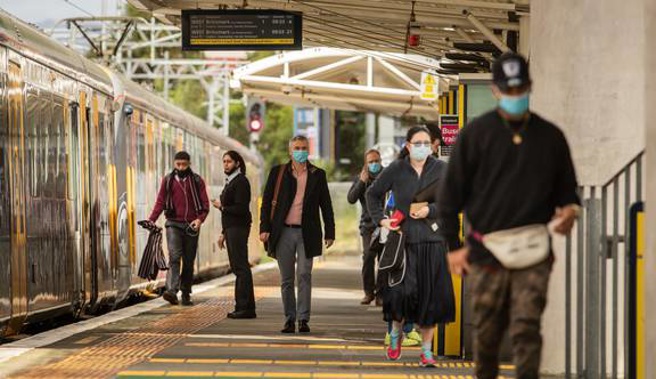
A big upswing in Auckland Omicron cases may signal the start a national climb to a new Covid-19 normal – prompting a fresh appeal for people to stay vigilant against the virus.
Experts say a clear trend being observed in our biggest city, where cases have jumped by 50 per cent in a few weeks, doesn't mark the beginning of a second Omicron wave – but may mark a shift to higher levels of infection across the country.
Since falling from an early March peak of 13,252 new cases, the combined seven-day rolling average across Auckland's three DHBs fell to less than 1600 in mid-April.
By the start of this week, that average was approaching the 2500 mark. A total 3388 new cases were reported on Thursday.
"If we look at the whole Northern region, which is Auckland plus Northland, that average ducked under 2000 at its lowest point, around Easter – and it's gradually crept up to around 2700 over the last three weeks," Covid-19 modeller Professor Michael Plank said.
"Auckland and Waitemata seem to have a stronger rebound in cases than Counties-Manukau, which we know had a very high infection rate earlier in the year, so there's likely a bit more immunity built up in that part of the population."
The northern region's daily rolling case average could climb to more than 3000 in the coming weeks, as the virus continued working its way through communities.
"We know that cases aren't evenly distributed across the population, and that infections have been heavily concentrated in younger age groups," he said.
"That means there's still a large susceptible population left – particularly in older groups – and what we're seeing now is the virus finding its way into new pockets that it hasn't really been in before."
For that reason, he said our hospitalisation rate – nationally holding steady at around 72 cases per million of population – would be important to keep an eye on.
"If we do start to see a lot more infections in older age groups, we'd expect that to push hospitalisation rates back up."
But he didn't expect the upswing to steepen to the dramatic trajectory of our first wave, when case numbers were doubling every three to four days.
"It's likely to be a gradual rise."
Fellow modeller Dr Dion O'Neale said it was possible Auckland's uptick could soon be repeated in other regions, where case numbers were either flat or gradually rising.
"We don't think there's anything particularly special about what's happening in Auckland – and if people in other regions think cases are only going to go up just there, perhaps they need to ask themselves why their region should be any different."
O'Neale expected a mix of factors was behind the change – notably an easing of restrictions that came with the move to orange.
"We really made a bunch of changes, just before Easter, that perhaps sent a signal to people that they could perhaps stop worrying about Covid as much as they did," he said.
"That might have meant people are now going out to restaurants more, they're not wearing their masks as often as they were, and they're doing more things indoors together."
Other likely factors included cooler temperatures and children returning to schools, where nearly 8000 cases were reported in just the last seven days.
It was those drivers of spread that recently prompted more than 150 experts to urge the Government to beef up measures to curb the virus – including reinstating a classroom mask mandate.
Among them was Otago University epidemiologist Professor Michael Baker, who was worried many people were still downplaying Omicron's risk.
"This variant has a similar severity to the ancestral strain seen in 2020, and its reduced fatality risk is mainly because of high vaccine coverage."
Baker was also concerned about the risk of long Covid that appeared to affect people of all ages.
"We know that reported case numbers in Auckland dropped down below 100 per 100,000 for a period and now they're tracking up again," he said.
"It may be that other parts of the country that still aren't quite so far from the peaks won't see such a dip – but will just see cases remain at similarly high rates to Auckland and then start to track upwards," he said.
"At the same time, the equilibrium might possibly be different in various places, simply because of the sizes of their populations, and how they mix."
Baker said it was unclear about just how high New Zealand's new national baseline might be – but Plank anticipated numbers would fluctuate between 6000 and 11,000 for the time being.
Because it took time for immunity to wane, Plank didn't expect our second wave to kick off until late winter.
With perhaps as many as three million people infected already, its trajectory was unlikely to be as dramatic as Omicron's first surge.
For now, the experts said it was crucial that people followed health rules, and stayed at home and took a rapid antigen test if they experienced symptoms.
"It's not like the risk has gone away and we don't have to do the things that keep us safe anymore," O'Neale said.
"Half of us have probably managed to avoid Covid. Keep taking those measures and you'll continue to avoid it for as long as possible."
Take your Radio, Podcasts and Music with you









